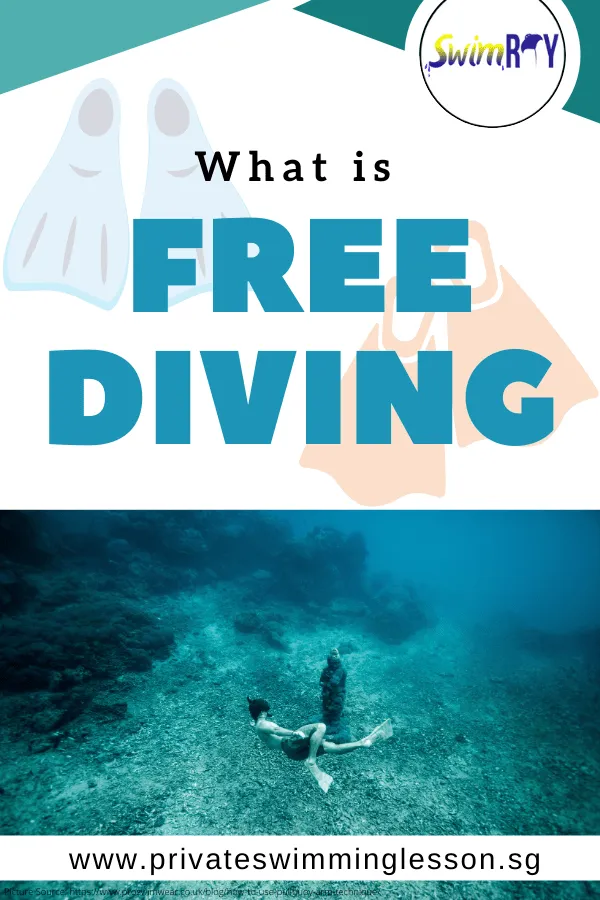
What is Freediving?
0 Comments
Add Comment

18/04/2021 23:30
Save It on Pinterest
Freediving looks graceful, doesn’t it? While it might appear so in pictures, it isn’t the reality. Freediving is said to require not only mental preparation, but also loads of practice when it comes to breathing techniques and also discipline. Here’s an individual who has it all NAILED. Herbert Nitsch currently holds the record as “the deepest man on earth” for diving 214 METERS and setting a world record in the “No Limits” discipline! Crazy impressive, isn’t he?
Let’s discuss a little on HOW to freedive. It takes at least 15 hours, AKA 2 to 3 days to get the basics down, so don’t beat yourself up if it’s taking some time to get your body and mind coordinating optimally.
First off, it’s important to know and internalize that it’s no easy feat to work up to a 4-minute breath-hold. It takes consistent practice to get your body accustomed to dealing with high carbon dioxide and low oxygen levels.
There are 3 items you’d need to purchase before you even sign up for a class to learn how to freedive: a diving mask, bi-fins and monofins. Why are each of these 3 equipment necessary?
A diving mask is intended to help with:
Bi Fins vs Monofins:
The difference between the 2 is that Bi Fins are unconnected fins while monofins are connected. So, how do you choose between the 2? If you’re one who prefers the pros of having faster speed, less water resistance, increased stamina and the ability to hit deeper depths in straight line diving, the monofin is for you! On the other hand, if you prefer an equipment that’s easier to use and steer with, less costly and is the safer bet, you’d want to stick with the bi fins for the time being.
While you might prefer to pick up new skills on your own, freediving is one that you shouldn’t take the risk with. Mistakes made during freediving can cost a life, which makes investing in a qualified professional key.
After you’ve enrolled in a class, these are the steps you could take to get better:
(a)Start by practicing in a pool where it’s safer.
(b)Try out fins! There are 3 kicks you can use here, the flutter kick, frog kick and dolphin kick. It is said that out of these 3, the dolphin kick is the most difficult one (those of you who have learnt the butterfly stroke will agree with this, hands down.)
(c)Practice duck diving. What’s that? To put it simply, it’s basically diving head-first into water. It’s also a skill surfers have to master in order to dive beneath waves to catch the next one!
(d)Learning how to equalize pressure. Water is denser than air, this means the pressure exerted on your body is greater. Also, the pressure increases the deeper you dive! Therefore, there’s a need to equalise the pressure by using your fingers to hold your nose shut and blowing out!
(a)Practice how you “breathe up”. Breathing up is the mental and physical preparation freedivers undergo before every dive. Essentially, the goal is to make diving easier by slowing down your heart rate, breathing rate AND relaxing your body.
(b)Making the most out of your last breath. You can imagine how important this step is! How you should ideally do this is by first exhaling completely and then breathing in as much as humanly possible before diving in.
(c)Master recovery breathing. By the time you resurface, you’d be desperate for air. But it’s important to breathe slowly to reduce the chances of blacking out!
Now that we’ve covered the basics of freediving and talked about some of the challenges one might face, I’m sure you agree that freediving is an extreme sport and is DEFINITELY more difficult than swimming mermaid-style! So, until you’re ready, focus on mastering the swimming strokes and especially your breathing techniques, which will probably come in handy once you’re ready to take freediving head-first (no pun intended).
Sign up SwimRay Condo Swimming Lessons and prepare for your next Freediving Trip !